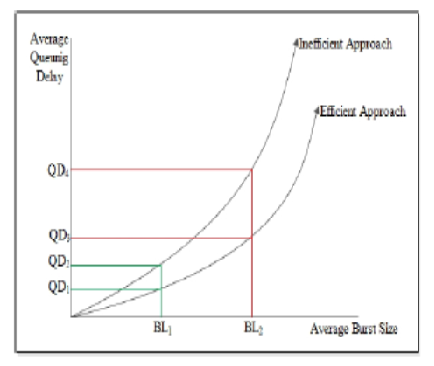


Indian Journal of Science and Technology
Year: 2024, Volume: 17, Issue: 5, Pages: 409-417
Original Article
Shamandeep Singh1, Simranjit Singh2, Bikrampal Kaur3
1Department of Computer Science, Punjabi University, Patiala, Punjab, India
2Department of Electronics & Communication Engineering, Punjab Engineering College, Chandigarh, India
3Department of Computer Science, CGC, Landran, Punjab, India
Received Date:27 October 2023, Accepted Date:05 January 2024, Published Date:23 January 2024
Background: Optical transport has emerged as a candidate solution to cope with the rising data transmission challenges of enormously evolving data. In Optical Burst Switching (OBS) networks, determining an adaptive burst size is a difficult task that must be performed efficiently during burst assembling. Methods: This research proposes a hybrid burst assembly algorithm that determines the optimal burst size during the burst creation time. The proposed algorithm uses the Transition Count Number (TCN) based method to maintain the optimal burst size when the incoming traffic is unpredictable. The efficiency of the proposed approach is investigated in terms of queuing delay, burst utilization, burst size, and burst size consistency. Findings: Three types of traffic variations (H = 0.5, H = 0.6, and H = 0.7) are imposed to evaluate the performance of the proposed burst assembly approach. As compared to the E-hybrid (time/length) strategy, the research outcomes demonstrate a 13.15% reduction in average queuing latency and a 21.26% improvement in average burst utilization. Novelty: A new burst assembly approach (hybrid burst assembly) has been proposed for OBS networks.
Keywords: Burst assembly, Optical Burst Switching (OBS), burstification, burst consistency
© 2024 Singh et al. This is an open-access article distributed under the terms of the Creative Commons Attribution License, which permits unrestricted use, distribution, and reproduction in any medium, provided the original author and source are credited. Published By Indian Society for Education and Environment (iSee)
Subscribe now for latest articles and news.